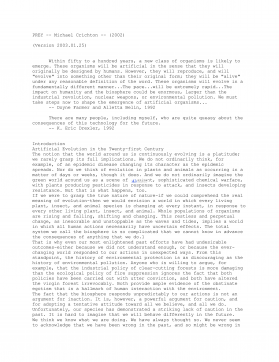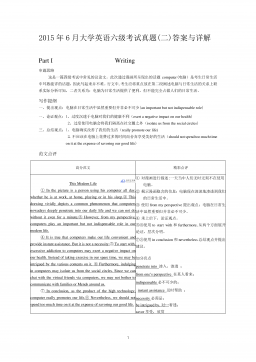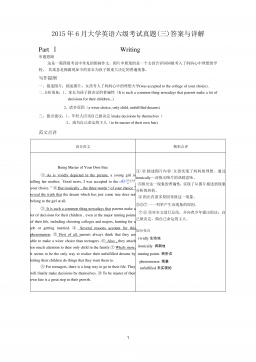2
in the decay region. In [
8
,
9
,
11
,
12
] this striking be-
havior was set into the context of a non constant energy
dissipation rate
Cε
. Contrary to what is predicted by
the Richardson-Kolmogorov phenomenology, the authors
could collapse one-dimensional energy spectra at differ-
ent wake positions using only one length scale and
u0
.
They also presented assessments of the homogeneity and
isotropy of the turbulence produced by FSG [7].
Vassilicos and Mazelier [
11
] related
xpeak
to the wake-
interaction length scale
x∗
, which is the ratio of the length
of the biggest square bar and its thickness.
x∗
is found to
be the appropriate length scale to characterize first and
second-order statistics of the turbulent flow generated
by FSG. The authors also showed that the turbulence
statistics are non-homogeneous and non-Gaussian in the
production region but become homogeneous and Gaussian
in the decay region. They suggested that the FSG can
be used for flow control and to enhance turbulent mixing
properties by understanding and determination of how
xpeak
and the generated turbulence intensities depend on
fractal grid geometry.
Several Direct Numerical Simulations (DNS) were con-
ducted to investigate the flow generated by fractal grids
[
13
–
17
]. Although these simulations qualitatively repro-
duced some of the underlying characteristics of fractal grid
turbulence, quantitative comparisons with experimental
data was not possible for mainly three reasons. First,
the simulations were conducted at very small Reynolds
numbers compared to the experiments. As an example,
in [
15
] the Reynolds number based on the effective mesh
size (see Section II) is
ReMef f
= 4430 for the simula-
tions and
ReMef f
= 20800 for the experiments, which
is a reduction with a factor of 5. Second, fractal grids
with a smaller iteration number were simulated, mainly 3
iterations, compared to the available experimental studies
where the iterations vary from 4 to 6. Finally, the extent
of the computational domain in the streamwise direction
was limited due to the high computational cost associated
with DNS. As all the flow details have to be resolved, the
meshes used in the different DNS simulations are huge
in terms of the number of nodes. Therefore, substantial
computational power is needed to keep the computational
time realistic. In the following, we summarize two impor-
tant DNS reference papers.
Laizet and Vassilicos [
13
] conducted DNS simulations
using the numerical code Incompact3d based on sixth-
order compact schemes for spatial discretization and
second-order Adams-Bashforth schemes for temporal dis-
cretization. They modeled a regular and a fractal grid
(with the same effective mesh size) using Immersed Bound-
ary Method (IBM) and their total numerical mesh of 765
million points. They could recover the production and
decay regions as well as the decay behavior of the turbu-
lence intensity, although they did not test the simulation
results to determine the nature of the decay law. More-
over, the turbulence recovered in the wake of the fractal
grid was found to be not homogeneous, which contradicts
the findings in the experiments [
7
,
11
]. They related this
observation to the small iteration number of their fractal
grid (
N
= 3) and the domain size chosen to be insufficient
for reaching homogeneity.
In a more recent paper, Laizet and Vassilicos [
18
] used
a new version of Incompact3d, which scales better when
used with large numbers of computational cores. They
simulated one regular and three square fractal grids (with
different aspect ratios). The simulations required the
use of 3456 computational cores. The DNS results show
that the turbulence produced by the fractal grids is more
intermittent than the one produced by regular ones. Nev-
ertheless, the extent of the computational domain and
number of fractal iterations (
N
= 3) were still insufficient
to obtain homogeneous turbulence in the decay region.
Therefore, they emphasize the need for more simulations
with extended computational domain and bigger itera-
tions (
N >
3) and experiments with
N
= 3 to be able to
compare the results with DNS. The authors also showed
that the value of
xpeak
introduced in [
11
] does not apply
for their grids, which have a smaller N, and introduced a
new xpeak formula based on N and the blockage ratio σ.
IIn the present paper, the wake of the flow through an
N
= 3 fractal square grid is investigated numerically and
experimentally. The experimental data was acquired from
PIV and hot-wire anemometry. Our main purpose is to
validate our numerical simulations against the experimen-
tal results and to characterize the turbulence generated
by fractal grids in terms of turbulent kinetic energy decay
law and one-point statistical quantities such as turbulence
intensity, third and fourth central moment and probability
density functions of the velocity fluctuations. Further-
more, the characterization of such turbulent fields will
assess the capabilities of DDES in reproducing the ex-
perimental results. A further goal of this investigation
is to compare experimental and numerical data of the
wake of a fractal grid with the experimental examination
of a regular grid with the same mesh size and blockage
ratio. Our simulations and experiments also involve an ex-
tended domain to obtain more homogeneous and isotropic
turbulence than DNS obtained so far.
This paper is organized as follows. Section 2 introduces
the geometrical aspects of the fractal square grid and of
a regular grid having the same mesh size and blockage
ratio. The regular grid has been investigated only experi-
mentally and is used here for comparison purposes. The
experimental setup and details of the PIV and hot-wire
anemometry used are presented in Section 3. Section
4 is dedicated to the numerical setup, including a brief
overview of the turbulence modeling and the numerical
solver. Section 5 discusses the low-order and higher-order
statistics results. Finally, in Section 6 the conclusions are
presented with an outlook for further investigations.

 2024-12-08 12
2024-12-08 12
 2024-12-08 14
2024-12-08 14
 2024-12-08 10
2024-12-08 10
 2024-12-08 10
2024-12-08 10
 2024-12-08 15
2024-12-08 15
 2024-12-08 18
2024-12-08 18
 2024-12-08 27
2024-12-08 27
 2024-12-08 25
2024-12-08 25
 2024-12-08 16
2024-12-08 16
 2024-12-08 30
2024-12-08 30







 渝公网安备50010702506394
渝公网安备50010702506394
